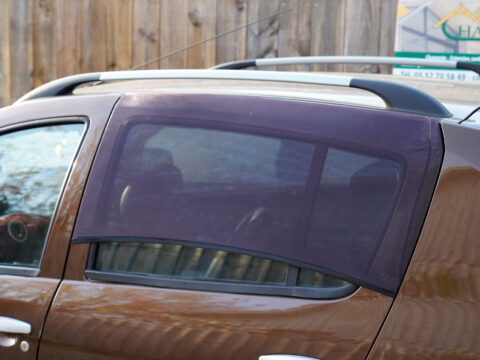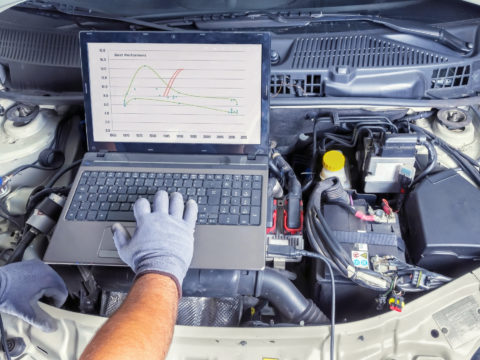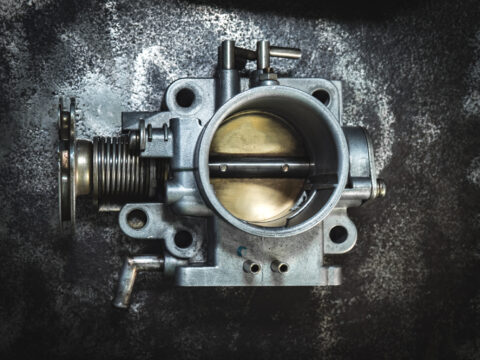If you’ve noticed a musty odor in your car or puddles on the floor, the obvious explanation is that you have a leak.
An ongoing leaking situation in your car can be a miserable one. Not only does it cause immediate stress and discomfort at a time when you need comfort most, but the long-term damage caused by this problem can be much worse.
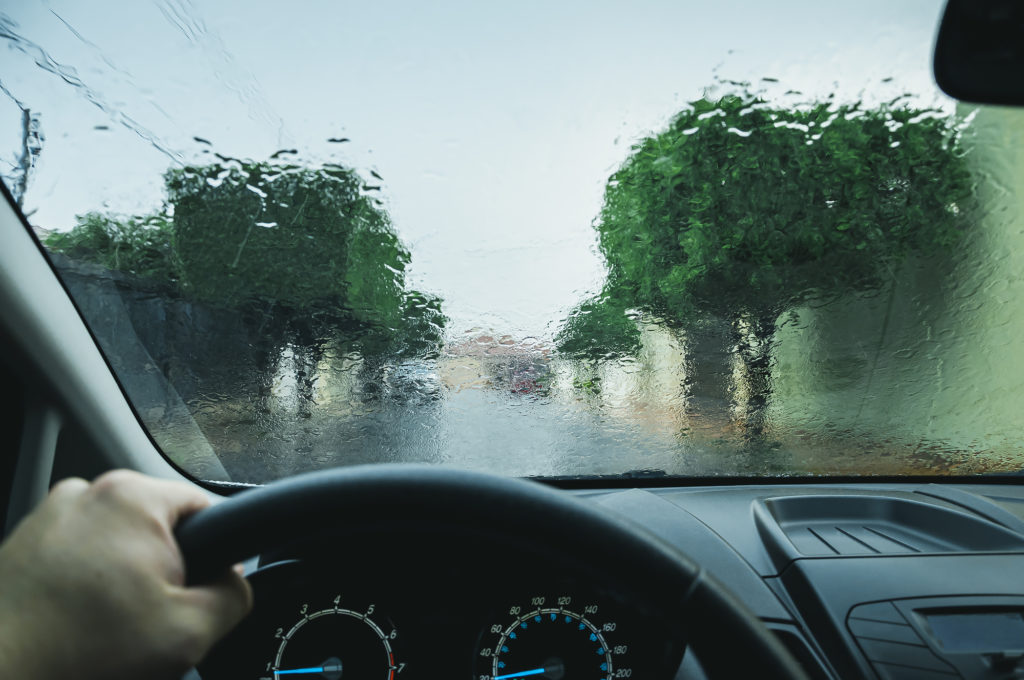
If you’re faced with water leaking into your car, we’re going to take some time today to see what some of the results of a leak might be, the source of the issue, and how you can solve it.
Contents
7 Reasons Water May be Leaking into Your Car
There could be one of a few reasons why water leaks into your car, so firstly, it’s important to find exactly where the water is getting into the car’s interior. It could be the sunroof, the doors, or the windshield; either way, you must find where it is so you can administer a quick solution.
1) Windshield rubber
When initially fitted, your front windshield is sealed with a rubber seal made of urethane which keeps air, dirt, and water from getting inside the car.
Over time the windshield rubber may weaken and result in water leaking into your car; this can also be caused by an improperly installed windshield.
Some older cars don’t use urethane but instead have rubber gaskets which can loosen off much quicker than urethane.
2) Loose rain guards
Rain guards or weather stripping seals the car doors and prevents outside elements from getting in.
This rubber guard can deteriorate over time and can also break. Not only that, but it may become loose, and any small gap in the stripping could be enough to cause a leak.
3) Door membrane
The door membrane sits behind the door card and is usually a thin sheet of foam or polythene. Any water that leaks into the body of the door panel usually drains out of the drain tube holes at the bottom of the door once it is stopped by the membrane.
If you’re getting a pool of water in the footwells of your car, it may be because of a ruptured membrane in the door panel that is allowing water to leak inside the car.
4) Door seals
If the rubber seal around the door becomes damaged or worn, it can let water track inside the vehicle in a rainstorm.
Sometimes the seal can harden, making it less capable of sitting flush against the door and preventing leakage.
5) Window seal
Window seals are also in danger of drying out and cracking.
They can be tightened with a screwdriver or replaced if their integrity is compromised.
6) Sunroof
Often the most common cause of leaks, sunroofs are not waterproof by design, so so are prone to leaks.
There is usually a sunroof drain, a small drain hose, around the rim of the window that allows water to flow off the car. If the sunroof drain tubes become blocked, this can cause a leak. You will need to inspect the drain holes, though be prepared for a build-up of smelly water!
7) Damaged floorboard
Splashback underneath your car can be turbulent, especially during heavy rain.
Think about how much of a splash you make when you drive through a puddle; that same splash is coming out underneath your car as well, and if your floorboards aren’t effectively sealed, the water build-up can be quick.
With this kind of leak, the damage can occur quickly, as it’s harder to notice, and the water damage can accumulate without you realizing.
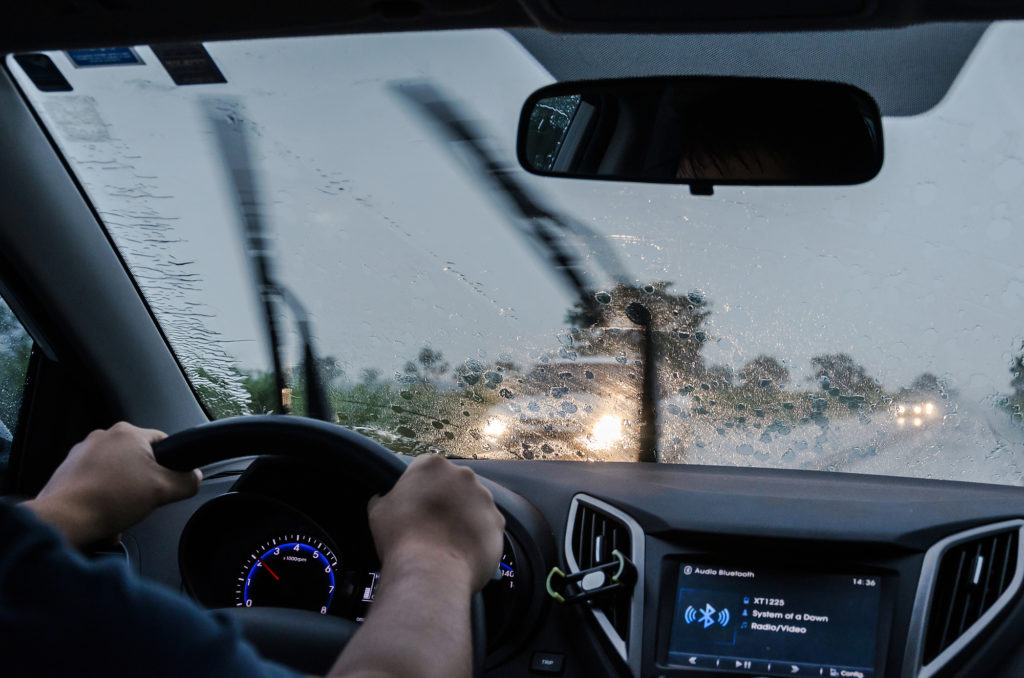
What to Do When You Notice a Water Leak in Your Car?
It’s important to take action as soon as you discover a leak in your vehicle to avoid permanent damage.
Dry out your car
If you can’t immediately locate the source of the leak, your first step should be drying out your car. This will prevent the build of mildew and the associated smell that can appear quickly and be hard to get rid of.
You can dry your car out with absorbent paper towels and by allowing it to air. Once the car has dried, you will have an easier job of finding the leak.
Locate the leak and fix it
Anything you do before this step is simply going to crop up again if you don’t fix the leak, so make sure you find how water is getting into your car and fix it as soon as possible.
Remove any detachable upholstery
Once the leak has been fixed, find and remove anything from your car that may have been affected by the leak, this includes seats, carpets, and door panels. All are fairly simple to remove, and once they’re out of the car, you can air them properly.
Use a dehumidifier or desiccant
Once you’ve dried the car out as much as you can by hand, try leaving a dehumidifier or large tub of desiccant in the car for 24 hours to complete the drying process. Some people even swear by leaving cat litter in the car!
How to Find Water Leaks in Your Car?
Regardless of the source of the leaking, water will accumulate in the lowest spot of your car, aka the footwells. But finding the source of the leak can be very tricky.
If the leak is only happening when it rains, we can diagnose that one of the sealants has come loose, so in this case, we see where the water is pooling. Is it at the front or the back? The driver or passenger side? Once we know this, we work backward up the car and scrutinize the weak points that might be letting moisture in.
How to Stop Rain From Leaking in a Car?
Fixing a leak in your car doesn’t necessitate getting professional help, and there are some fixes you can apply yourself.
Replacing door seals
This can be done by removing the worn rubber entirely and clearing the area with alcohol to remove dirt and adhesive.
Then peel off the protective seal covering your new seal and apply it to the spot, cutting off the strip once you have used what you need.
Clear the sunroof drains
If giving your sunroof isn’t leaking because it is failing to close, you may need to clear your drains.
An air compressor or a hose can have enough pressure to clear out the gunk that can accumulate in the drain.
Replace the weather stripping
Inspect the seals and see if they are firmly pressed against the glass; if not, you may require a replacement.
Minor wear and tear can be fixed with restorative products, but if the damage is too great you will need a replacement.
Replace windshield rubber
The rubber around your windshield is supposed to be a perfect fit, and if water is leaking in through the front or rear glass, you will need the windshield taken out and refitted with the seals replaced if they need it.
Replace window seals
The windows in your car have rubber seals on the inside and outside that sit flush against the glass and keep them watertight.
Cold and exposure to sunlight can render the seals inflexible, stopping them from hugging the glass properly.
A restorative product might give the seals back their integrity but failing that, a mechanic can install new seals for you.
When to Visit a Car Water Leak Detection Service
This depends on the severity of the leak and the seriousness of the inclement weather. The longer it’s left, the greater the lasting damage would be. If the cause of the leak isn’t obvious, like when it rains for, example, seeking professional help would be advisable.
It may be an issue beyond the loss of integrity in the waterproofing. For example, a leaking heater core might be the issue and is harder to diagnose. The same could be true of a faulty air conditioning system. These issues would be easier detected by a professional.
What If the Rain Leaks Are Not Fixed?
You can expect a build-up of corrosive rust, which can damage the upholstery and potentially corrode the metal in your car.
You should also be concerned about the electrical wiring in your car, which could be seriously damaged and pose a threat to your passengers and you if left to worsen.
You can also expect a musty smell and lasting water damage.


